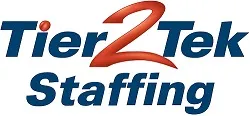Operations Manager Interview Questions with Answers

An Operations Manager plays a critical role in ensuring smooth business operations, aligning teams with strategic goals, and driving efficiency across processes. Whether you’re applying in manufacturing, logistics, retail, or corporate environments, technical knowledge is essential to stand out. Below is a collection of technical interview questions and short-form answers to help you prepare with confidence.
1. What is Lean Manufacturing?
Lean Manufacturing is a methodology that focuses on minimizing waste within manufacturing systems while maximizing productivity.
2. How do you manage supply chain disruptions?
By maintaining strong vendor relationships, having contingency plans, monitoring KPIs, and using inventory buffers or dual sourcing strategies.
3. What’s the difference between KPIs and SLAs?
KPIs (Key Performance Indicators) measure internal performance, while SLAs (Service Level Agreements) define service expectations with external vendors or departments.
4. How do you implement process improvements?
Through root cause analysis (e.g., 5 Whys), mapping current workflows, testing solutions (Kaizen or pilot projects), and monitoring results.
5. Describe a time you improved operational efficiency.
(Short sample: Reduced order processing time by 30% by automating manual steps and cross-training staff.)
6. What ERP systems are you familiar with?
SAP, Oracle NetSuite, Microsoft Dynamics, and Odoo. Each supports resource planning and real-time data analysis.
7. What’s your experience with inventory management systems?
Used tools like Fishbowl and Zoho Inventory to track stock levels, reorder points, and optimize warehouse layout.
8. What is Six Sigma?
Six Sigma is a data-driven methodology for improving processes by eliminating defects and ensuring consistent quality.
9. How do you perform capacity planning?
By analyzing historical data, forecasting demand, evaluating resource availability, and adjusting schedules accordingly.
10. What safety regulations are important in operations?
OSHA compliance, hazard communication, machine safety, PPE standards, and emergency protocols are crucial.
11. How do you manage cross-functional teams?
Through clear communication, shared KPIs, collaboration tools (like Slack or Asana), and regular alignment meetings.
12. What’s the importance of standard operating procedures (SOPs)?
SOPs ensure consistency, quality, and compliance. They reduce training time and human error.
13. How do you handle underperforming suppliers?
Evaluate using scorecards, communicate issues, provide improvement opportunities, and switch vendors if necessary.
14. What role does data analysis play in operations?
It helps identify trends, inefficiencies, and opportunities for improvement. Tools like Excel, Power BI, or Tableau are used.
15. What’s your approach to budgeting in operations?
Forecast costs, align with strategic goals, monitor expenses, and adjust proactively based on performance metrics.
🔧 Common Acronyms to Know Before Your Interview
Familiarity with industry acronyms shows preparedness and fluency in operational language. Here are some essential ones:
KPI – Key Performance Indicator
A measurable value that indicates how effectively a company or team is achieving key business objectives.
SLA – Service Level Agreement
A formal agreement between a service provider and a client that outlines expected service standards and metrics.
ERP – Enterprise Resource Planning
A type of software used to manage day-to-day business activities like accounting, procurement, and supply chain.
SOP – Standard Operating Procedure
A set of step-by-step instructions compiled to help workers carry out routine operations consistently.
5S – Sort, Set in order, Shine, Standardize, Sustain
A workplace organization method aimed at efficiency and safety, commonly used in lean environments.
FIFO – First In, First Out
An inventory management principle ensuring older stock is used before newer items, important for perishables.
JIT – Just-In-Time
A strategy that aligns raw-material orders with production schedules to reduce inventory costs.
OEE – Overall Equipment Effectiveness
A metric that measures manufacturing productivity by combining availability, performance, and quality.
TQM – Total Quality Management
A company-wide approach to long-term success through customer satisfaction, emphasizing quality improvement.
DMAIC – Define, Measure, Analyze, Improve, Control
A Six Sigma data-driven improvement cycle used for optimizing and stabilizing processes.
